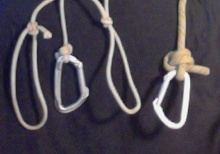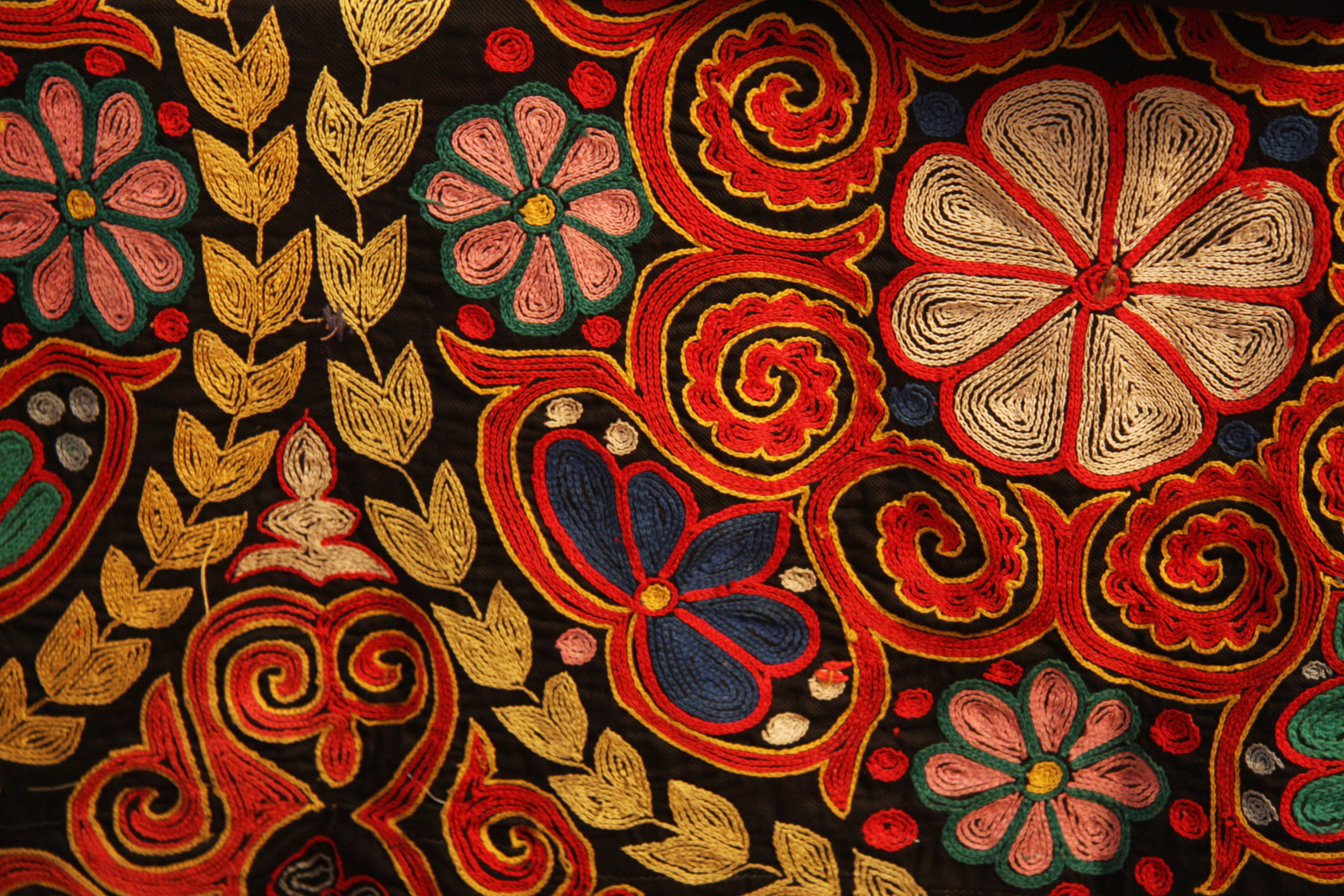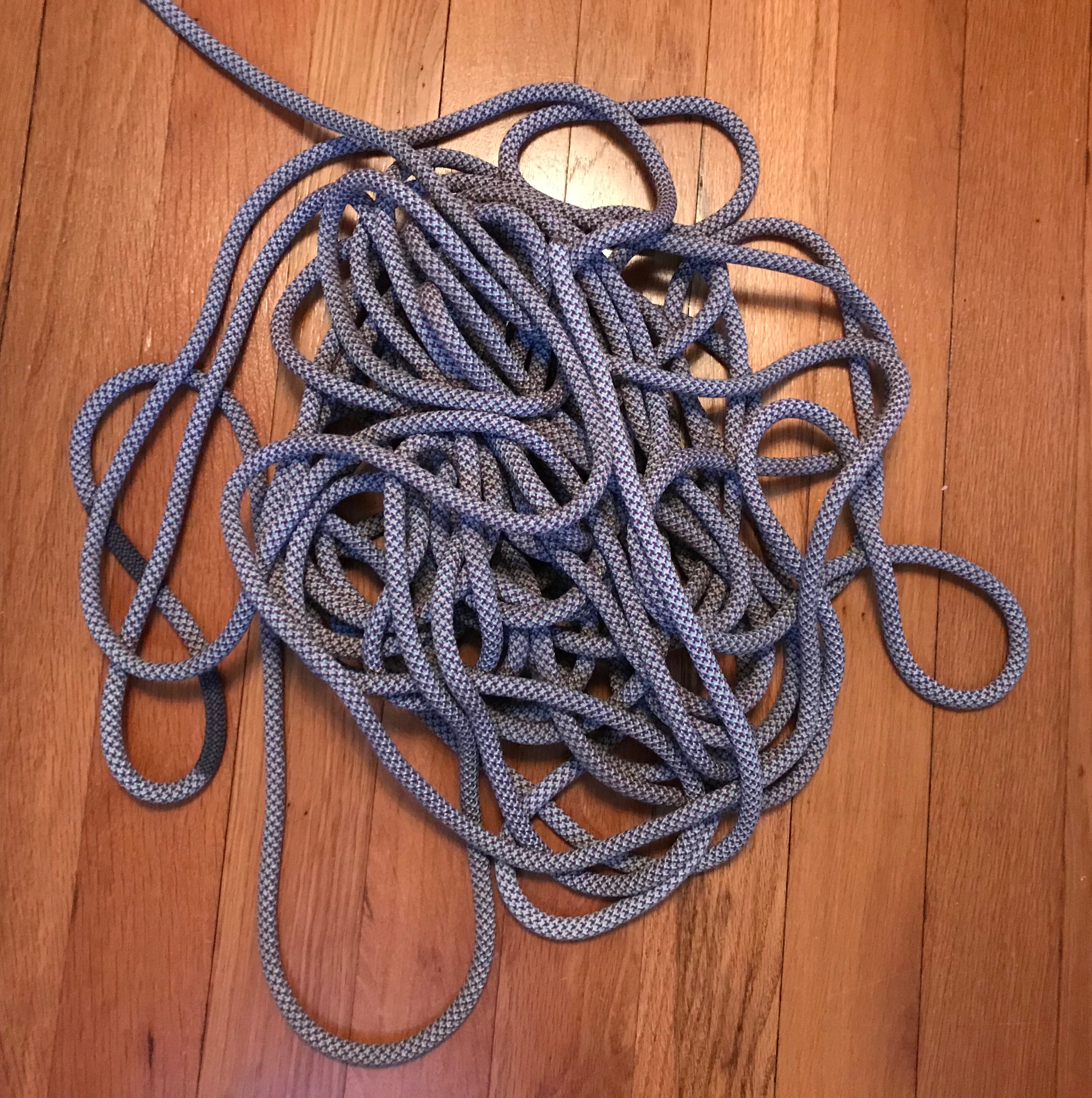|
Chain Sinnet
A chain sinnet (or chain sennit) is a method of shortening a rope or other cable while in use or for storage. It is formed by making a series of simple crochet-like stitches in the line.Clifford W. Ashley, ''The Ashley Book of Knots'' (New York: Doubleday, 1944), 209. It can also reduce tangling while a rope is being washed in a washing machine. Tying To tie: #Create a loop in the rope. Then pull a bight of the working part through the loop, creating an overhand noose knot. #Pull another bight of the working part through the loop of the previous stitch. #Tighten the stitch to the desired degree by pulling on both sides of the loop. Adjust the loop by pulling on the working end to keep it a reasonable size. #Repeat steps 2–3 until the rope has been sufficiently shortened. #To lock the sinnet, pass the working end through the final loop. To restore the rope to its original length, pull the end passed in the last step back through the final loop and pull on the free end. ... [...More Info...] [...Related Items...] OR: [Wikipedia] [Google] [Baidu] |
Rope
A rope is a group of yarns, plies, fibres, or strands that are twisted or braided together into a larger and stronger form. Ropes have tensile strength and so can be used for dragging and lifting. Rope is thicker and stronger than similarly constructed cord, string, and twine. Construction Rope may be constructed of any long, stringy, fibrous material, but generally is constructed of certain natural or synthetic fibres. Synthetic fibre ropes are significantly stronger than their natural fibre counterparts, they have a higher tensile strength, they are more resistant to rotting than ropes created from natural fibres, and they can be made to float on water. But synthetic ropes also possess certain disadvantages, including slipperiness, and some can be damaged more easily by UV light. Common natural fibres for rope are Manila hemp, hemp, linen, cotton, coir, jute, straw, and sisal. Synthetic fibres in use for rope-making include polypropylene, nylon, polyesters ... [...More Info...] [...Related Items...] OR: [Wikipedia] [Google] [Baidu] |
Wire Rope
Steel wire rope (right hand lang lay) Wire rope is several strands of metal wire twisted into a helix forming a composite '' rope'', in a pattern known as ''laid rope''. Larger diameter wire rope consists of multiple strands of such laid rope in a pattern known as ''cable laid''. In stricter senses, the term ''wire rope'' refers to a diameter larger than , with smaller gauges designated cable or cords. Initially wrought iron wires were used, but today steel is the main material used for wire ropes. Historically, wire rope evolved from wrought iron chains, which had a record of mechanical failure. While flaws in chain links or solid steel bars can lead to catastrophic failure, flaws in the wires making up a steel cable are less critical as the other wires easily take up the load. While friction between the individual wires and strands causes wear over the life of the rope, it also helps to compensate for minor failures in the short run. Wire ropes were developed starting with ... [...More Info...] [...Related Items...] OR: [Wikipedia] [Google] [Baidu] |
Crochet
Crochet (; ) is a process of creating textiles by using a crochet hook to interlock loops of yarn, thread, or strands of other materials. The name is derived from the French term ''crochet'', meaning 'hook'. Hooks can be made from a variety of materials, such as metal, wood, bamboo, or plastic. The key difference between crochet and knitting, beyond the implements used for their production, is that each stitch in crochet is completed before the next one is begun, while knitting keeps many stitches open at a time. Some variant forms of crochet, such as Tunisian crochet and broomstick lace, do keep multiple crochet stitches open at a time. Etymology The word crochet is derived from the Old French ''crochet'', a diminutive of ''croche'', in turn from the Germanic ''croc'', both meaning "hook". It was used in 17th-century French lace-making, where the term ''crochetage'' designated a stitch used to join separate pieces of lace. The word ''crochet'' subsequently came to describe bot ... [...More Info...] [...Related Items...] OR: [Wikipedia] [Google] [Baidu] |
Bight (knot)
In knot tying, a bight is a curved section or slack part between the two ends of a rope, string, or yarn.. "Any slack part of a rope between the two ends, particularly when curved or looped." A knot that can be tied using only the bight of a rope, without access to the ends, is described as in the bight. The term "bight" is also used in a more specific way when describing Turk's head knots, indicating how many repetitions of braiding are made in the circuit of a given knot. Bight vs. open loop Sources differ on whether an open loop or U-shaped curve in a rope qualifies as a bight. treats bights and loops as distinct, stating that a curve "no narrower than a semicircle" is a bight, while an open loop is a curve "narrower than a bight but with separated ends". However, ''The Illustrated Encyclopedia of Knots'' (2002) states: "Any section of line that is bent into a U-shape is a bight." Slipped knot In order to make a slipped knot (also slipped loop and quick release knot) ... [...More Info...] [...Related Items...] OR: [Wikipedia] [Google] [Baidu] |
Overhand Noose
The double overhand noose is a very secure hitch knot. It might be used by cavers and canyoneers to bind a cow tail or a foot loop to a carabiner. Details File:Noeud double ganse-1.jpg, Make a bight File:Noeud double ganse-2.jpg, Turn around the standing end File:Noeud double ganse-3.jpg, the 2nd round rides the 1st File:Noeud double ganse nouage.jpg, Tie inside the two rounds File:Noeud double ganse-4.jpg File:Noeud double ganse-5.jpg, Tighten A heavily tightened double overhand noose will jam. The bound object has to be removed before untying. As the double overhand knot, it neither slips nor turns around. However, a third round turn might be useful with some highly lubricious spectra/nylon ropes. See also *List of hitch knots *List of knots Notes References {{Knots Hitch knots Hitch may refer to: People * Hitch (surname) * nickname of director Alfred Hitchcock (1899-1980) * nickname of writer Christopher Hitchens (1949–2011) Other uses * Hitch, a knot used ... [...More Info...] [...Related Items...] OR: [Wikipedia] [Google] [Baidu] |
List Of Knots
This list of knots includes many alternative names for common knots and lashings. Knot names have evolved over time, and there are many conflicting or confusing naming issues. The overhand knot, for example, is also known as the thumb knot. The figure-eight knot is also known as the Savoy knot or the Flemish knot. A * Adjustable Bend – can be easily lengthened or shortened *Adjustable Grip Hitch – a simple hitch which may easily be shifted up and down the rope while slack * Albright Special – used to tie two different diameters of line together, for instance to tie monofilament to braid *Alpine Butterfly (also known as Butterfly Loop) – a static loop mostly used by mountain climbers and rappellers for securing a carabiner to static rope. *Alternate Ring Hitching – covering a ring in hitching can prevent damage * Anchor Bend – attaching a rope to a ring or similar termination * Angler's Loop – knot which forms a fixed loop. Useful for fine or slippery line, it ... [...More Info...] [...Related Items...] OR: [Wikipedia] [Google] [Baidu] |
Chain Stitch
Chain stitch is a sewing and embroidery technique in which a series of looped stitches form a chain-like pattern. Chain stitch is an ancient craft – examples of surviving Chinese chain stitch embroidery worked in silk thread have been dated to the Warring States period (5th – 3rd century BC). Handmade chain stitch embroidery does not require that the needle pass through more than one layer of fabric. For this reason the stitch is an effective surface embellishment near seams on finished fabric. Because chain stitches can form flowing, curved lines, they are used in many surface embroidery styles that mimic "drawing" in thread. Chain stitches are also used in making tambour lace, needlelace, macramé and crochet. In Azerbaijan, in the Sheki region, this ancient type of needlework is called tekeldus. History The earliest archaeological evidence of chain stitch embroidery dates from 1100 BC in China. Excavated from royal tombs, the embroidery was made using threads of s ... [...More Info...] [...Related Items...] OR: [Wikipedia] [Google] [Baidu] |
Coil Knot
A coiling or coil is a curve, helix, or spiral used for storing rope or cable in compact and reliable yet easily attainable form. They are often discussed with knots. Mountaineer's coil The mountaineer's coil (also alpine coil, climber's coil, lap coil, or standing coil) is a traditional method used by climbers to store and transport a climbing rope. This older style coil is noted as being more prone to twists and tangles than the butterfly coil, and care must be taken upon uncoiling to avoid these problems. Tying method Begin by taking hold of the rope in one hand with its end facing you. Coil the rope in arm's length sections with your free hand (extending it away from the other as far as it will reach to ensure each segment is of equal length as it is gathered). Alternate tucking the new gather in front and behind the previous coil to avoid putting a half-turn in the rope with each coil. When the last segment is reached form a short bight atop the gathered rope w ... [...More Info...] [...Related Items...] OR: [Wikipedia] [Google] [Baidu] |
Daisy Chain (climbing)
A wide range of equipment is used during rock or any other type of climbing that includes equipment commonly used to protect a climber against the consequences of a fall. Rope, cord and webbing Climbing ropes are typically of kernmantle construction, consisting of a core (kern) of long twisted fibres and an outer sheath (mantle) of woven coloured fibres. The core provides about 70% of the tensile strength, while the sheath is a durable layer that protects the core and gives the rope desirable handling characteristics. Ropes used for climbing can be divided into two classes: dynamic ropes and low elongation ropes (sometimes called "static" ropes). Dynamic ropes are designed to absorb the energy of a falling climber, and are usually used as belaying ropes. When a climber falls, the rope stretches, reducing the maximum force experienced by the climber, their belayer, and equipment. Low elongation ropes stretch much less, and are usually used in anchoring systems. They are al ... [...More Info...] [...Related Items...] OR: [Wikipedia] [Google] [Baidu] |
Sennit
Sennit is a type of cordage made by plaiting strands of dried fibre or grass. It can be used ornamentally in crafts, like a kind of '' macramé'', or to make straw hats. Sennit is an important material in the cultures of Oceania, where it is used in traditional architecture, boat building, fishing and as an ornamentation. Oceania Tonga Sennit in Tonga is called ''kafa.'' Fiji The Fijian term used is ''magimagi'', a craft product of the Fiji Islands. Hawai'i The term is also used in Hawaii and throughout Polynesia for cordage made by braiding the fibers of coconut husks. It was important in attaching the ''ama'' ( outrigger float) via the '' iako'' (spars) to the hull of canoes, stones to war-club handles, erecting ''hale'' (houses), etc. Samoa In the Samoan language, sennit is called ''afa''. It was used as cordage in the construction of traditional Samoan architecture, boat building with many other functional uses. ''Afa'' is handmade from dried coconut The ... [...More Info...] [...Related Items...] OR: [Wikipedia] [Google] [Baidu] |
Sling (climbing Equipment)
A sling or runner is an item of climbing equipment consisting of a tied or sewn loop of webbing. These can be wrapped around sections of rock, hitched to other pieces of equipment, or tied directly to a tensioned line using a Prusik style knot. They may be used as anchors, to extend an anchor to reduce rope drag, in anchor equalization, or to climb a rope. Types Slings come both sewn to length and assembled from loose webbing knotted as desired. Common sewn lengths include , , , and . They are available in widths of . Webbing for slings, also known as ''tape'', is sold off the reel, cut to length with a hot knife to prevent fraying, and tied as desired with a water knot. Sewn slings have a rated breaking strength of at least . Short sewn slings are a component of quickdraws, sometimes known as ''dogbones''. Traditionally, slings have been made of nylon. Increasingly, ultra high molecular weight polyethylene sold under the brand names Dyneema, Dynex and Spectra is use ... [...More Info...] [...Related Items...] OR: [Wikipedia] [Google] [Baidu] |








